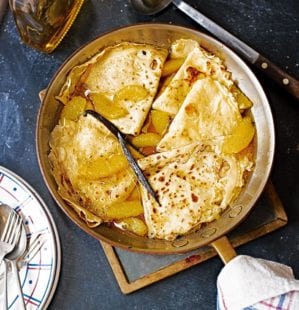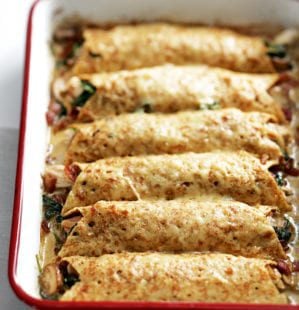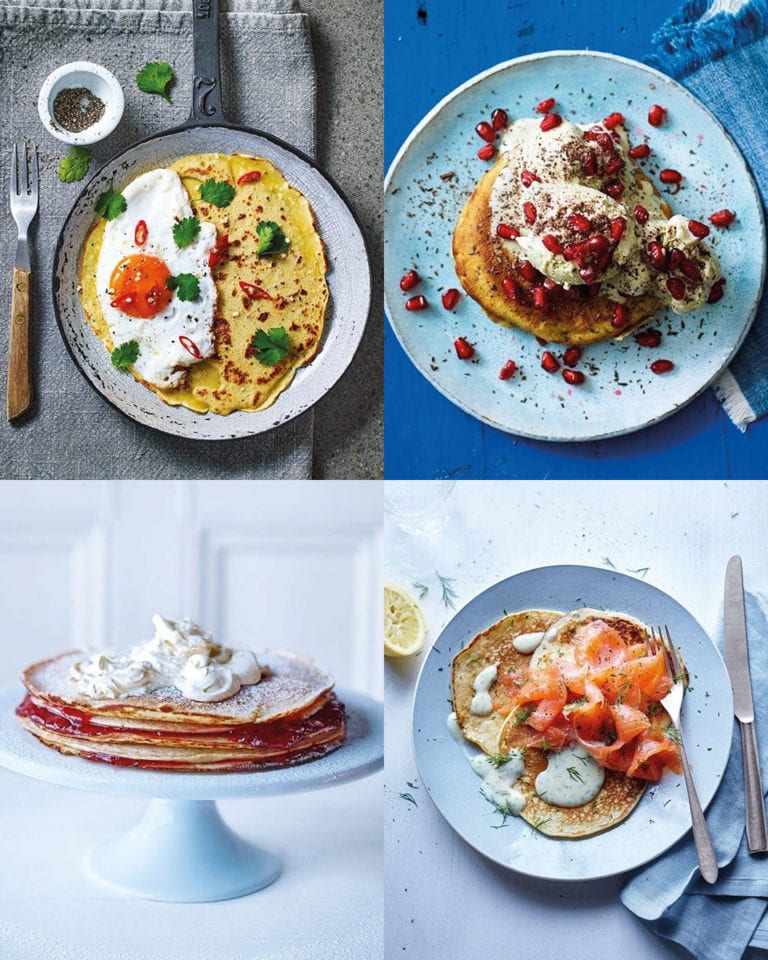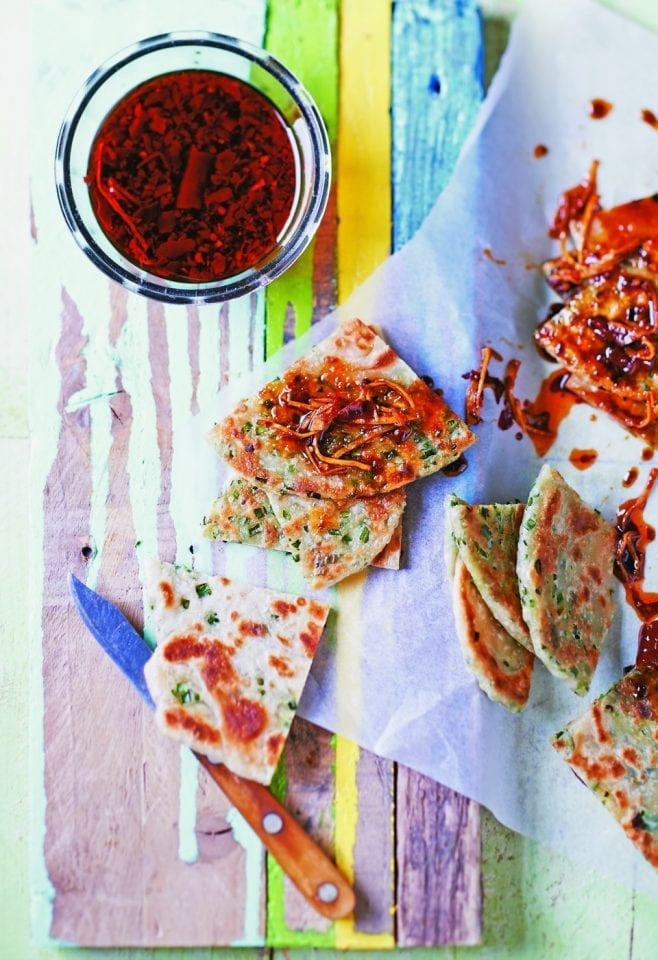How to make perfect pancakes
Looking to learn how to make pancakes? Whether it’s Pancake day, Valentine’s Day, or you simply fancy pancakes for dessert, follow our step-by-step recipe guide for basic (and easy!) crêpe-style pancakes.
We also have simple tips and tricks that will have you cooking up wafer-thin pancakes every time. Small details can really mean the difference between a lacklustre pancake and one that has everyone lining up for more. Make this year’s Shrove Tuesday – or your next batch of brunch pancakes – a meal to remember with our ultimate guide.
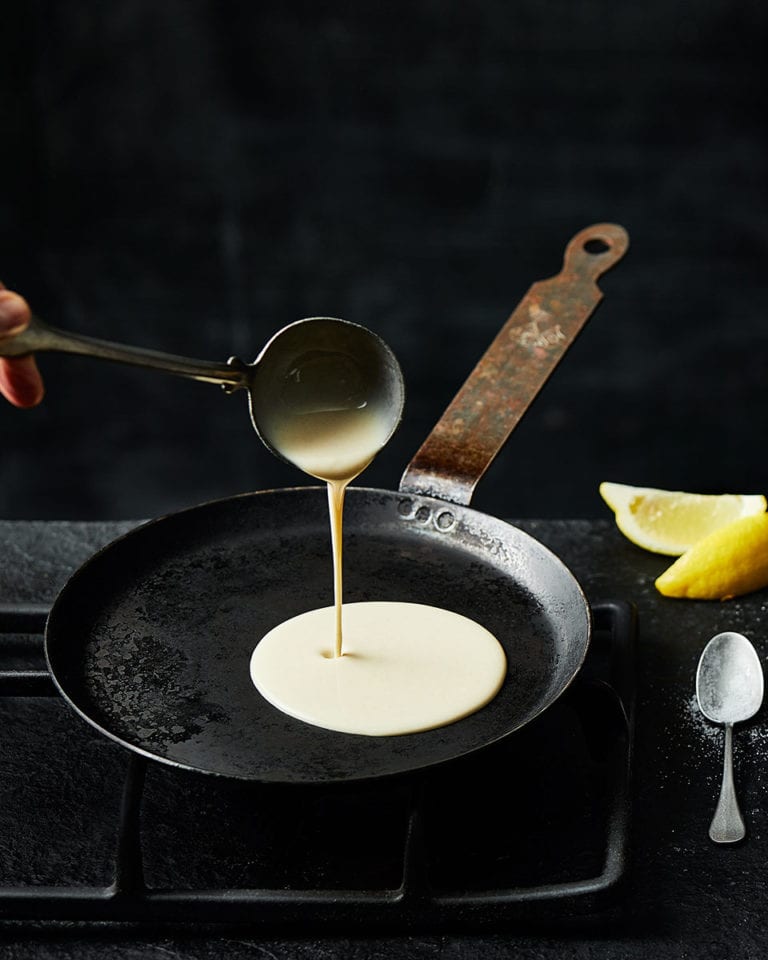
Your pancake FAQs
What’s the best pancake batter ratio?
It depends on the absorbency of your flour – you’re looking for a batter with the consistency of single cream. You can double or treble our core recipe (below) to make as many pancakes as you need.
Should you rest pancake batter?
Letting the batter rest for a few hours allows the gluten to relax and the starch in the flour to soak up the liquid. The result is a softer, lighter pancake. You can rest it overnight, chilled, but thin it down with a little milk before using.
What pan should you use to make pancakes?
Use a heavy-based, non-stick frying pan, as it will distribute a constant, even heat. A shallow lip means you don’t have to get too much height when flipping and you’re less likely to catch the pancake on the edge as it settles back down into the pan.
How hot should a pan be for pancakes?
The pan needs to be properly hot before you start cooking. If you’re using butter for frying it needs to foam when it hits the pan, and oil should have a loose, shimmery consistency. Use a piece of kitchen paper or a silicone pastry brush to brush the fat over the base of the pan.
When should you flip a pancake?
Allow the batter to cook on the first side for slightly longer than your instinct tells you (if in doubt, lift the edge with a palette knife to check the pancake has some colour). To flip, loosen the pancake with a palette knife, then slide it towards the far side of the pan before you toss. The other side needs slightly less cooking time.
Should you eat pancakes straightaway?
Pancakes need to be eaten straightaway. Flip and eat. Work like a production line, taking turns. Roll or fold? Your choice.
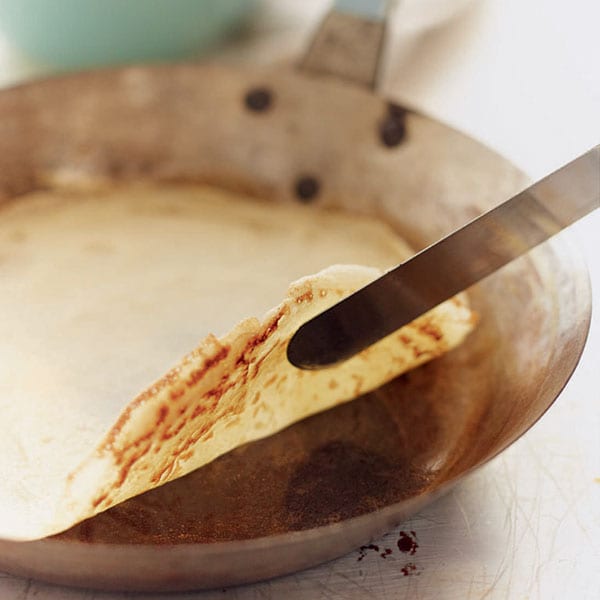
Tips for making pancake batter
- Add the milk to the flour gradually, whisking continuously as you go, until you have a smooth batter. Don’t panic if it’s lumpy – simply sieve into another bowl.
Tips for cooking pancakes
- Invest in a good crêpe pan made of cast iron – it conducts heat well, meaning the pancakes will cook evenly. A handle that stays cool is vital, too.
- If your crêpe pan is new, season it (if necessary), to make it virtually non-stick. Heat the pan until hot, rub with salt then wipe clean. Heat again, rub with mild oil and again wipe clean. Cool. Your pan is now ready to use. Never wash the pan after use – wipe clean with kitchen paper.
- Cooking the pancakes in a mild oil is better than using butter, which burns easily.
- Less is more when making pancakes – the less batter you add to the pan, the more likely you are to end up with beautifully thin pancakes. Fill in any gaps with more batter if you need to.
- The first pancake is often a write-off, as it takes practice to get the pan heat right and swirl the batter around – batter recipes tend to allow for the odd mishap!
- Using a palette knife to flip pancakes over is much easier and less messy than tossing them. The non-stick quality of your pan is vital here, too.
- Layer pancakes up between baking paper to stop them sticking. You can freeze them like this, wrapped in cling film, for 1 month. Thaw at room temperature and warm through in a low oven.
These simple tips and tricks will have you cooking up perfect, wafer-thin pancakes every time.
Our classic easy pancake recipe
Makes 4 large or 8 medium. Takes about 20 minutes to make, plus resting the batter.
You will need…
- 125g plain flour
- 1 medium egg, beaten
- 275ml-300ml semi-skimmed milk
- Vegetable or sunflower oil, for frying
1. To make the batter, sift the flour with a pinch of salt into a large bowl. Make a well in the centre, pour in the egg and slowly whisk in enough milk to make a smooth batter, the consistency of pouring cream. Rest for at least 20 minutes.
2. Heat a 28cm crepe pan or a smaller heavy-based frying pan over a medium heat. When hot, dip some kitchen paper in the oil and wipe across the surface of the pan. Add a small ladleful of batter and tilt the pan to swirl the batter evenly and thinly.
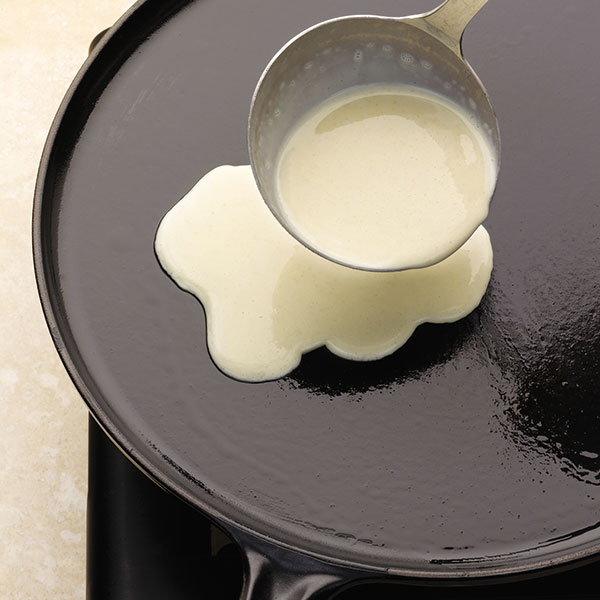
3. Cook for 1-2 minutes, until the pancake is golden underneath.
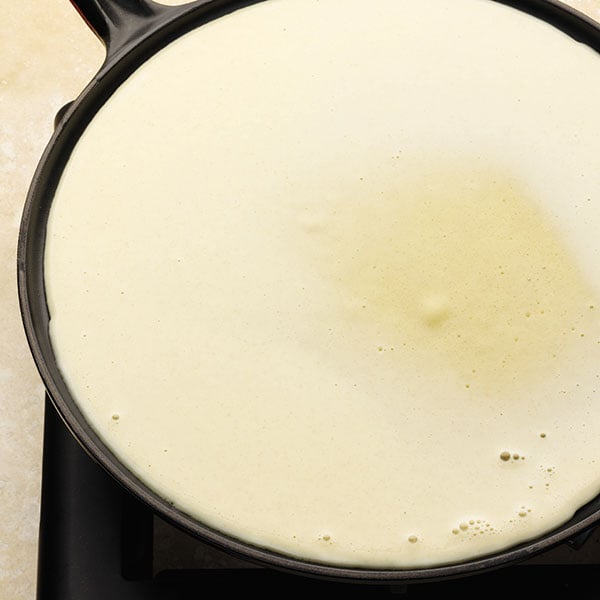
4. Loosen all around the pancake with a palette knife. Flip over and cook for a further minute, until golden.
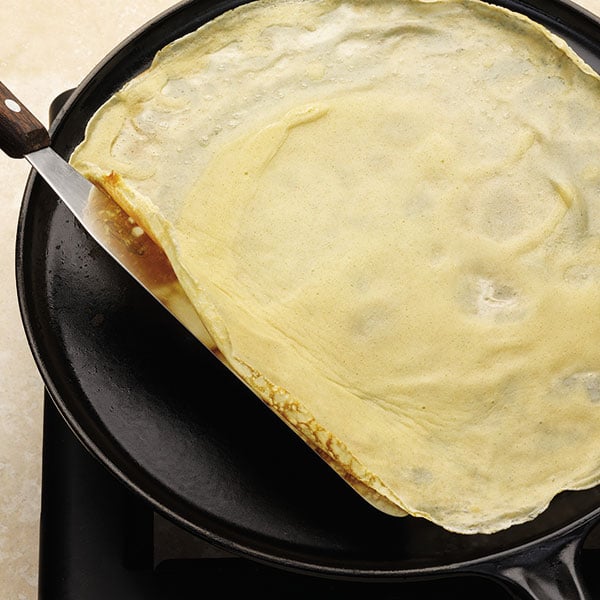
5. Slide out onto a plate, putting a sheet of greaseproof paper between each pancake to stop them sticking together. Repeat to finish up the batter – oil the pan between each pancake.
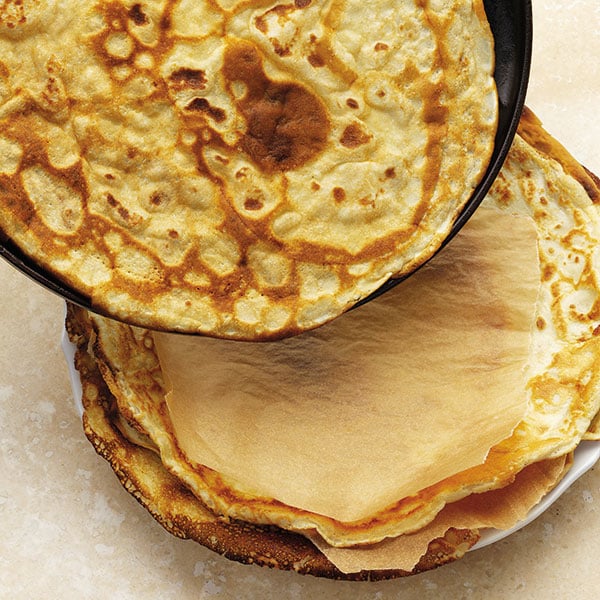
6. Serve the pancakes with lemon wedges to squeeze over and sprinkle with caster sugar – or add whatever toppings your heart desires!
Nutritional information:
Per large pancake: 209kcals, 8.7g fat (1.9g saturated), 7.2g protein, 27.5g carbs, 3.7g sugar, 0.1g salt.
Now you’ve mastered the art of making pancakes, have a go at some of our sweet and savoury recipes.
Subscribe to our magazine
Food stories, skills and tested recipes, straight to your door... Enjoy 5 issues for just £5 with our special introductory offer.
Subscribe
Unleash your inner chef
Looking for inspiration? Receive the latest recipes with our newsletter
